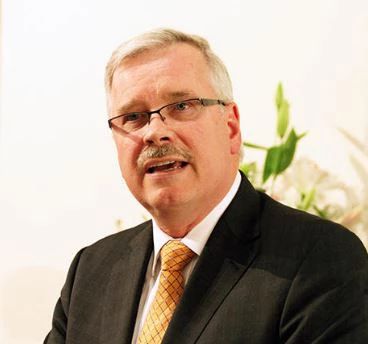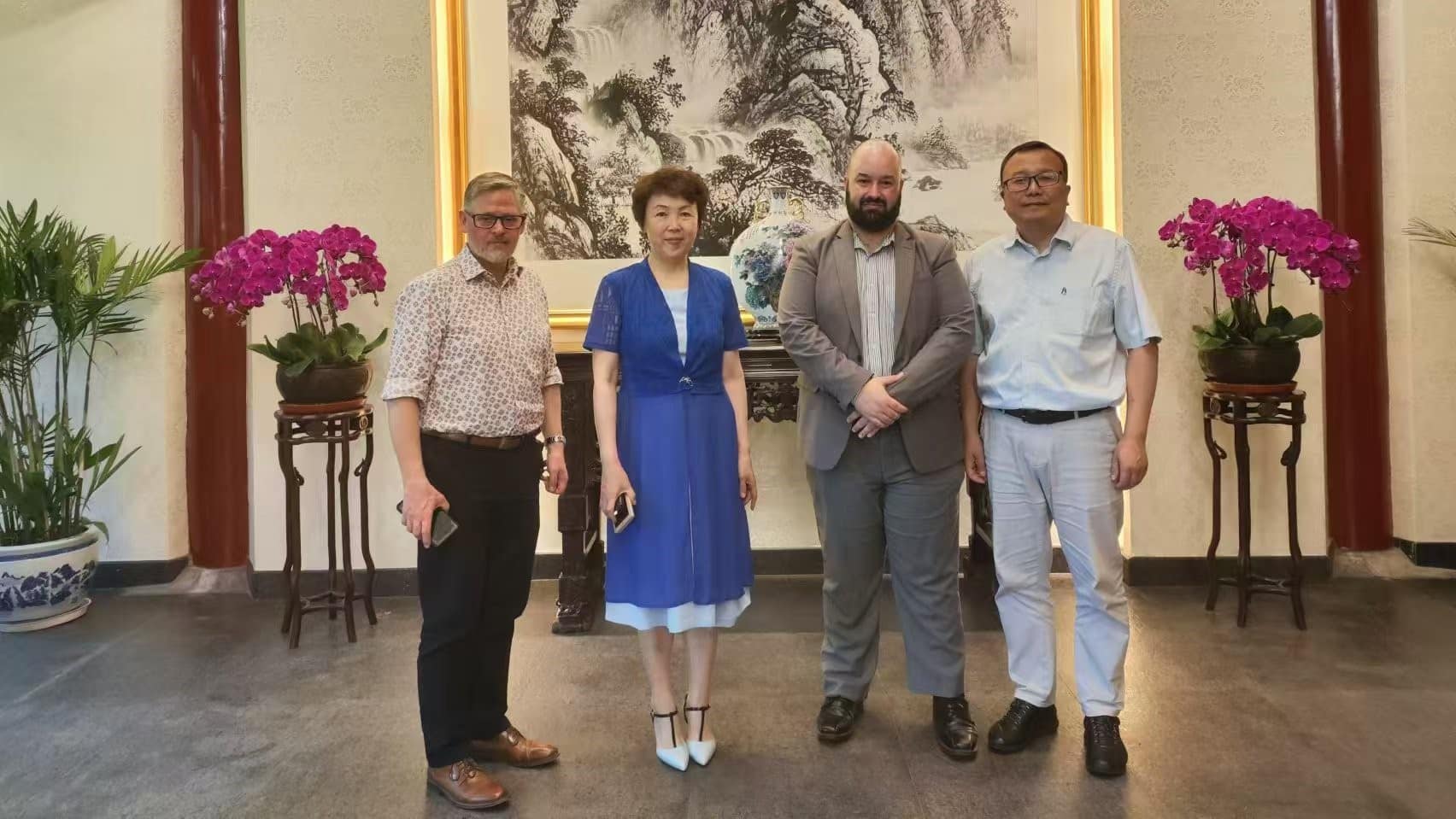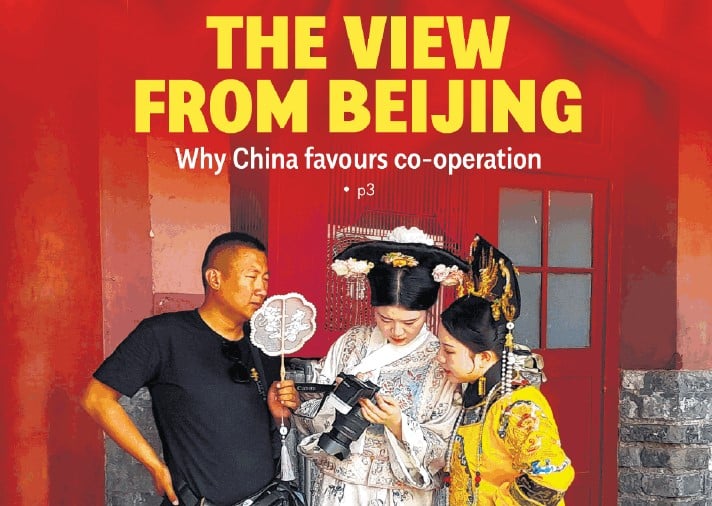ASIA PACIFIC REGIONAL INTEGRATION – WITH OR WITHOUT THE UNITED STATES?
ADDRESS TO THE ASIA FORUM in Wellington at 7 Feb 2017
It’s good to have this early opportunity, as a new year unfolds, to speak about the outlook for trade and investment in the Asia Pacific region.
This year is definitely not a case of “plus ça change, plus c’est la même chose”.
A new President in the White House is challenging the model of past American leadership in the global economy and with that long-held principles and practices of economic co-operation and integration.
This coincides with a new questioning around the world of the process of globalisation, how its benefits are shared and its challenges managed.
I am perhaps a little brave, at this early stage, in accepting Farib’s invitation to explore these issues – the President has been in office for less than a month (somehow it seems longer!) and his Administration is not yet completely in place.
I am certainly of the view that we need to let time elapse before being too definitive about the policy choices New Zealand might have to make in the light of these profound changes in the global environment.
It is not too early to start thinking about how we might position ourselves and so tonight I’d like to explore with you:
-
firstly, where the process of economic integration in the Asia Pacific region has led us thus far
-
secondly, how this process might be challenged in the months to come
-
and lastly, what we here in New Zealand need to be doing.
I’m speaking to you this evening mainly from the perspective of the NZ International Business Forum, a group of senior business leaders concerned with New Zealand’s engagement in the global economy.
These themes are relevant across the range of my work with organisations including the NZ China Council, the APEC Business Advisory Council and the Australia New Zealand Leadership Forum.
Economic integration – how far have we come?
One of the much repeated criticisms of the ill-fated Trans Pacific Partnership (TPP) was that it was not a trade agreement at all.
I read as much in a recent blog on the website of the Foundation for Economic Education.
“Rather than a simple agreement to lower tariffs for mutual benefit, the writer alleged, TPP morphed into a massive international regulatory regime over 5,000 pages long. It was weighed down by numerous non-trade provisions aimed at appeasing non-trade special interests”[1].
It’s not the purpose of my remarks tonight to attempt to rebut the many criticisms of TPP but this particular one calls for a little more economic education!
Of course TPP was a trade agreement – the larger part of those 5000 pages are taken up by complex schedules outlining the process for the elimination of tariffs.
(We can debate whether TPP is a “free” trade agreement since in some limited cases, albeit ones of interest to New Zealand, the goal of zero tariffs was not reached).
But there’s a much bigger picture here and it’s really not complicated – trade is not trade anymore.
Trade has been replaced by a set of much more complex economic interactions between firms and whole economies.
Professor Peter Petri and colleagues, in a report to ABAC in 2015, captured this well when he said:
“Businesses (today) engage in more varied activities, with a wider range of partners, and in more markets than ever. Major technological and economic trends are disrupting the business environment, including the emergence of global value chains, the digital/Internet revolution, the rise of a giant middle class, and dramatic improvements in connectivity[2].
Many of the objections to TPP overlook the fact that the business model in the region has changed and that global and regional value chains, where production occurs across multiple jurisdictions, are, in the words of Professor Petri, “an Asia Pacific innovation”.
New Zealand is not immune from this movement.
New Zealand manufacturers and processors of natural resources including food and forest products are suppliers into these global value chains.
As my friend John Ballingall from NZIER suggested in a recent op ed: “The days of Kiwi firms shipping butter and whole sides of lamb direct from the processing plant to the end consumer are long gone”[3].
Research undertaken by NZIER for the Pacific Economic Co-operation Council (PECC) shows that while New Zealand is struggling to lift its overall participation in GVCs we do much better in relation to agriculture and food and beverage production.
To quote John Ballingall again: “This world of global value chains (GVCs) poses a number of challenges and opportunities to Kiwi firms, and forces policy-makers to think in non-traditional ways. What’s been done in the past is unlikely to be ideal now as New Zealand looks to boost its productivity and living standards”.
It was precisely to try to find new ways of incentivising and enhancing access into these global value chains that TPP was conceived.
In that sense TPP represented an effort for the regional framework of rules for trade and investment to catch up with the action – even if in the end it was a very long and tortuous process.
Hence the need for the agreement to cover not just tariffs but non-tariff barriers, not just goods but services, not just trade but investment, not just border measures but behind the border measures, not simply regulatory harmonisation – as the writer of that blog contends – but processes for regulatory coherence and convergence, not “one size fits all” but “one fit for all sizes”.
I promised this wouldn’t become an apologia for TPP but simply put TPP was trying, in all its insufficiency, to reflect the new reality of the way business is done in the region and beyond.
The fact of the matter is that business is moving faster than the regulatory system and has been doing so for some time.
TPP was one instrument for achieving economic integration – certainly something less than the utopia of free trade but a very good second best option.
TPP is not the whole answer either – it is a coalition of twelve willing partners, which was always designed to lead to something much larger, an APEC-wide grouping gathered together in the Free Trade Area of the Asia Pacific (FTAAP).
Nor is TPP the only such pathway to FTAAP.
In Asia there is the Regional Comprehensive Economic Partnership (RCEP).
I’m tempted (but it would be unkind) to describe RCEP as a coalition of 16 unwilling partners, given the rather limited level of ambition, which seems to characterise the negotiating process.
It is important to stress that RCEP is not the forum in which China, as our American friends would have it, “is writing the rules for the region”.
RCEP is led by ASEAN, not China, and while on paper seeks an ambitious outcome, is mostly about ASEAN integration with the rest of East Asia.
For its part China remains very interested in the concept of the Free Trade Area of the Asia Pacific (FTAAP).
In his address to the APEC CEO Summit in Lima last November President Xi Jinping described FTAAP as “a strategic choice concerning the long-term prosperity of the Asia-Pacific; We should steadfastly promote its construction and provide institutional guarantees for fostering an open regional economy”[4].
President Xi also expressed a preference for inclusiveness:
“Any regional trade arrangement, in order to earn broad support, must be open, inclusive and all-win; closed or exclusive pacts are not the right choice”.
Finding a way to realise the FTAAP vision has been difficult.
The theory was that TPP and RCEP, once concluded, would coalesce into FTAAP which would be anointed by the coming together of China and the United States in a new framework which could spark life into a global process in the World Trade Organisation.
Hope clearly springs eternal in the realm of trade negotiations!
Challenges to the existing order
The arrival of President Trump in the White House has clearly put paid to much of this grand strategy – at least for the time being.
His decision to withdraw from TPP was easily done, if fundamentally flawed – after all, he was withdrawing from a treaty that had not come into force, the benefits of which had not been fully seen.
But there are broader issues at play.
His “America First” policies, including the call to bring businesses back to the USA, pose a direct challenge to the prevailing business model in the region.
His stated preference for bilateral deals runs counter to the quest for a region-wide framework of rules for trade and investment.
These rules seek to make doing business easier while avoiding the infamous “noodle bowl” effect of conflicting and overlapping disciplines.
Any future adventurism in US foreign policy, particularly with regard to China, could serve to destabilise the stability and security of the region.
This stability is a necessary pre-requisite for advancing economic and commercial interests.
All of this reverses former President Obama’s policy of seeking to engage more directly in the region through the “Asia pivot” of which TPP became, more by association than by design, the flag-bearer.
It may well be of course that these worst fears may not be realised – as I said, these are very early days in the life of new Administration.
But even at this point it is not hard to see that there could be a departure from what we have known of American leadership in the region.
In a recent memo the respected head of the American think-tank CSIS, John Hamre, writes that we are back in 1949 – a time when President Truman faced an existential choice about whether to concentrate on domestic growth and competitiveness at the expense of global recovery after World War II.
Hamre writes – “we are back to the great challenge that faced President Truman. Will America shake off its deep- seated desire to pull back and nurse its bruises, or will it champion an international order designed to create a broad environment where human potential can blossom?”[5]
It was after all American leadership, which imposed a benign order on the region after the conflict of the last century.
It was this leadership, which helped secure the emergence of the World Trade Organisation as the repository of trade law and a framework for settling disputes
It is this leadership, which has in more recent times, trialled new arrangements for trade liberalisation through NAFTA and a range of other agreements, and helped shape the new business model we see today in the region.
This is not to say that the existing order is either perfect or sufficient – clearly it was not.
In the economic space that order has come under intense criticism.
There has been criticism for failing to take sufficient account of environmental and sustainability issues.
There has been a perceived failure to ensure that those who are disadvantaged from the adjustment brought about by changing patterns of production and trade are appropriately cared for and helped into new areas of enterprise.
And there is the criticism that economic integration has served to advance the interests of multinational corporations especially through measures aimed at stimulating and protecting investment or through the rules being devised for the digital economy.
“Making globalisation work for people” is not just a slogan – it has become a policy imperative in the age of Brexit and Trump.
So, in 2017, we face not only the prospect of new direction from the United States on trade, we face new challenges from within about the nature of the very order that has served us well in the past.
What should New Zealand do?
In this context, what is to be done by a small, open, trade-dependent economy like New Zealand?
It needs to be recognised that this is not the first time the core assumptions of New Zealand’s trade policy have been challenged.
When Britain joined the European Economic Community in 1973 we faced the herculean task of diversifying our economy while hanging on tooth and nail to our access for butter and sheepmeat. (How ironic that today we’re back again talking with Europe and Britain!)
In 1983 we sought to break out of a straightjacket of protectionism and economic befuddlement when we concluded CER with our best friends the Australians – that living and evolving agreement remains a bedrock of New Zealand economic success.
In 1993 when the outcome of the GATT Uruguay Round was in doubt, we made it known that New Zealand was open to the concept of high quality and comprehensive trade deals in the Asia Pacific region.
That ultimately led to FTAs with Singapore, Chile, P4, ASEAN, China and TPP – this sort of FTA coverage was unthinkable back in the day.
Today we see that New Zealand’s Plan A, focused largely if not exclusively around TPP, has gone off the boil and Plan B, is, to quote Prime Minister English, “tricky”.
What is Plan B for New Zealand?
It is certainly not a retreat into “fortress New Zealand” which makes no sense for a nation so dependent on trade and economic integration.
Nor is it a futile attempt to keep away from the controversial aspects of TPP and seek to negotiate more limited “market access only deals” – this merely denies the reality of value chains.
New Zealand after all is already largely a free market for others’ exports – most of them don’t see the need to reciprocate.
One key advantage today, which was not the case in 1973, 1983 or 1993, is that we have options.
Plan B is likely going to be a mix of things, both in the Asia Pacific region and beyond.
Among the latter are the emerging NZ/EU FTA and a possible post Brexit FTA with Britain.
Among the former are the initiative to upgrade our bilateral FTA with China and new initiatives like China’s “One Belt, One Road”, which we need to examine more deeply.
We certainly need to continue to seek a high quality, comprehensive and ambitious outcome from RCEP.
RCEP may not at present be an alternative to TPP, but is a useful initiative none the less, particularly for New Zealand if it delivers for us better access to Japan and India which we currently lack.
Then there the prospect of a TPP-like agreement amongst the remaining 11 members.
Australia, New Zealand and Singapore have expressed interest in exploring the options and Mexico has signalled that it wishes to explore bilateral agreements with the remaining members.
Japan, a key player, has recently said TPP is “meaningless” without the United States.
I think this Japanese reticence is entirely understandable and needs to be seen in the context of their critical security relationship with the United States.
On the other hand, Japan, like New Zealand and unlike other members, has already ratified TPP.
We need to let some quiet diplomacy proceed to see if the remaining 11 parties, or a sub-set of them, see merit in amending TPP to take account of US withdrawal.
This should include deciding whether or not to strip out of the agreement those things that were essentially US demands.
TPP (11) would not deliver the long sought-after FTA with the United States.
While China – under our shortly to be upgraded FTA – may have replaced the United States as our top trading partner, the US remains as important to us today as it was the day before the Presidential inauguration.
America is not just a major trade and investment partner – it is a powerhouse of innovation, entrepreneurship and business ideas.
New Zealand now has to find a way to engage and work constructively with the new Administration, even as we look to advance other options for growing and future-proofing our economy.
The way ahead is far from easy.
New Zealand has been seeking to obtain a bilateral FTA with the United States since the turn of the century.
Two problems have bedevilled that effort: first, a poor political and security relationship, which has now been fixed, thanks to efforts over years by certain politicians and diplomats on both sides, supported by leaders from business and the wider community gathered in the NZ US Council and its counterpart in the United States.
And second, on the economic front, the small size of the New Zealand economy and the perceived – if highly exaggerated – risk which our agricultural sector poses to American farmers.
This will make it difficult for New Zealand to get ahead in the FTA queue and may make a purely bilateral agreement ultimately no easier to negotiate than TPP.
While we simply do not know the detail of the new President’s trade policy, he is not likely to do us favours on agriculture and may seek to go beyond the TPP outcomes on issues like investment and intellectual property, especially medicines.
There is also the challenge of seeking improved visa access to enable New Zealand professionals to work temporarily in the US as many services exporters especially in the tech sector would wish.
To return to my favourite theme, there is much irony here – TPP’s lengthy negotiation was in part because the other 11 partners were seeking to counter the full extent of American ambition across a range of issues.
This was largely achieved: the final TPP text was a carefully structured consensus, which represented a balance of interests of all parties.
For New Zealand TPP delivered substantial benefits with little change to existing policies, even if we did not achieve all we hoped.
Conclusion
Will economic integration proceed with or without the United States?
The theme for my remarks this evening was framed as a question but perhaps it should have been an exclamation!
Economic integration driven by globalisation and commercial impetus is likely to proceed whether the United States ultimately decides to lead that process or not.
There may be holes in the boat, but it is not sinking – yet.
The question is more what sort of economic integration are we going to see and what will be the rule-making that shapes it.
New Zealand benefits from rules for trade and investment especially when we have had a hand in making them.
New Zealand does not have the luxury of closing off options before they have been fully explored.
We’ve been in this space before.
Today we are entering a new and uncertain period where old assumptions may no longer hold true, where old economic allies may not play the role we have become accustomed to.
This profound change requires fresh thinking from governments and stakeholders, together with perseverance and commitment, as we chart some new and potentially rough waters.
[1] Iain Murray: “Free Traders shouldn’t mourn the loss of the TPP” -https://fee.org/articles/free-traders-shouldnt-mourn-the-loss-of-the-tpp/
accessed 1 February 2017
[2] Peter A Petri et al: “The FTAAP Opportunity – a report to ABAC”, October 2015 – https://www2.abaconline.org/assets/2015/4%20Manila/FTAAP%20OPPORTUNITY%20(1).pdf
accessed 1 February 2015
[3] See http://nzier.org.nz/static/media/filer_public/51/9b/519b017e-b6e5-4629-b507-9972e6c47507/nzier-summary-report-gvc-policies-for-nz-fb-and-ag-28-jan-2016.pdf
[4] http://news.xinhuanet.com/english/2016-11/20/c_135843072.htm accessed 2 February 2017
[5] John Hamre; “Memorandum to CSIS Trustees, Advisers and Friends”, 1 February 2017












 MENU
MENU
